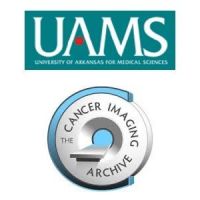Increased detection of low-risk cancers through the use of high-tech imaging is driving up thyroid cancer rates, according to a Mayo Clinic study published in the journal Thyroid. Researchers found that the number of new cases of thyroid cancer nearly doubled over the past decade, with nearly 30 percent of these recent cases diagnosed when clinicians used high-tech imaging even when no symptoms of thyroid disease were present.
"We are spotting more cancers, but they are cancers that are not likely to cause harm," says lead author Juan P. Brito, MBBS, an assistant professor of medicine at Mayo Clinic. "Their treatment, however, is likely to cause harm, as most thyroid cancers are treated by surgically removing all or part of the thyroid gland. This is a risky procedure that can damage a patient's vocal cords or leave them with lifelong calcium deficiencies."
In this study, Dr. Brito and colleagues analysed the records of 566 men and women who were diagnosed with thyroid cancer in Olmsted County, Minnesota, between 1935 and 2012. Specifically, they examined the number of new cases of thyroid cancer, the deaths due to the disease, and the method of diagnosis. Their key findings include:
Researchers found that the most frequent reasons for identifying silent thyroid cancer were review of thyroid tissue removed for benign conditions (14 percent); incidental discovery during an imaging test (19 percent); and investigations of patients with symptoms or palpable nodules that were clearly not associated with thyroid cancer, but triggered the use of imaging tests of the neck (27 percent).
Researchers say one way to curtail the detection of these lesions would be to limit the use of certain imaging technologies. "Contrary to what we expected, the main imaging technology driving the diagnosis of thyroid cancer is thyroid ultrasonography," Dr. Brito told HealthManagement.org. "Thus, the best way to limit the overdiagnosis of thyroid cancer is to curtail the use of thyroid sonography. One approach is, as it has been recommended by guidelines, not to order a thyroid ultrasound in patients with abnormal thyroid function tests or patients without symptoms secondary to thyroid nodules."
Dr. Brito thinks something as simple as not using the word "cancer" to refer to these small and silent thyroid lesions could reduce the number of unnecessary treatments for patients with a more favourable prognosis. Rather than calling these lesions thyroid cancer, he would recommend a less emotionally charged term, such as papillary lesions of indolent course.
Source and image credit: Mayo Clinic
"We are spotting more cancers, but they are cancers that are not likely to cause harm," says lead author Juan P. Brito, MBBS, an assistant professor of medicine at Mayo Clinic. "Their treatment, however, is likely to cause harm, as most thyroid cancers are treated by surgically removing all or part of the thyroid gland. This is a risky procedure that can damage a patient's vocal cords or leave them with lifelong calcium deficiencies."
In this study, Dr. Brito and colleagues analysed the records of 566 men and women who were diagnosed with thyroid cancer in Olmsted County, Minnesota, between 1935 and 2012. Specifically, they examined the number of new cases of thyroid cancer, the deaths due to the disease, and the method of diagnosis. Their key findings include:
- New cases of thyroid cancer increased from 7.1 per 100,000 people in 1990-1999 to 13.7 per 100,000 people in 2000-2012.
- Over the same period, the number of new patients with thyroid cancer presenting with symptoms of thyroid cancer remained the same, while the number of new cases of silent thyroid cancer (ie, no symptoms) almost quadrupled.
- The proportion of patients with thyroid cancer who die of the disease has not changed since 1935.
Researchers found that the most frequent reasons for identifying silent thyroid cancer were review of thyroid tissue removed for benign conditions (14 percent); incidental discovery during an imaging test (19 percent); and investigations of patients with symptoms or palpable nodules that were clearly not associated with thyroid cancer, but triggered the use of imaging tests of the neck (27 percent).
Researchers say one way to curtail the detection of these lesions would be to limit the use of certain imaging technologies. "Contrary to what we expected, the main imaging technology driving the diagnosis of thyroid cancer is thyroid ultrasonography," Dr. Brito told HealthManagement.org. "Thus, the best way to limit the overdiagnosis of thyroid cancer is to curtail the use of thyroid sonography. One approach is, as it has been recommended by guidelines, not to order a thyroid ultrasound in patients with abnormal thyroid function tests or patients without symptoms secondary to thyroid nodules."
Dr. Brito thinks something as simple as not using the word "cancer" to refer to these small and silent thyroid lesions could reduce the number of unnecessary treatments for patients with a more favourable prognosis. Rather than calling these lesions thyroid cancer, he would recommend a less emotionally charged term, such as papillary lesions of indolent course.
Source and image credit: Mayo Clinic
References:
Brito JP et al. (2015) The Impact of Subclinical Disease and Mechanism of Detection on the Rise in Thyroid Cancer Incidence: A Population-Based Study in Olmsted County, Minnesota During 1935 Through 2012. Thyroid.
September 2015, 25(9): 999-1007. doi: 10.1089/thy.2014.0594
Latest Articles
healthmanagement, thyroid, cancer, imaging exams, sonography, overdiagnosis
Increased detection of low-risk cancers through the use of high-tech imaging is driving up thyroid cancer rates, according to a Mayo Clinic study published in the journal Thyroid. Researchers found that the number of new cases of thyroid cancer nearly dou



























